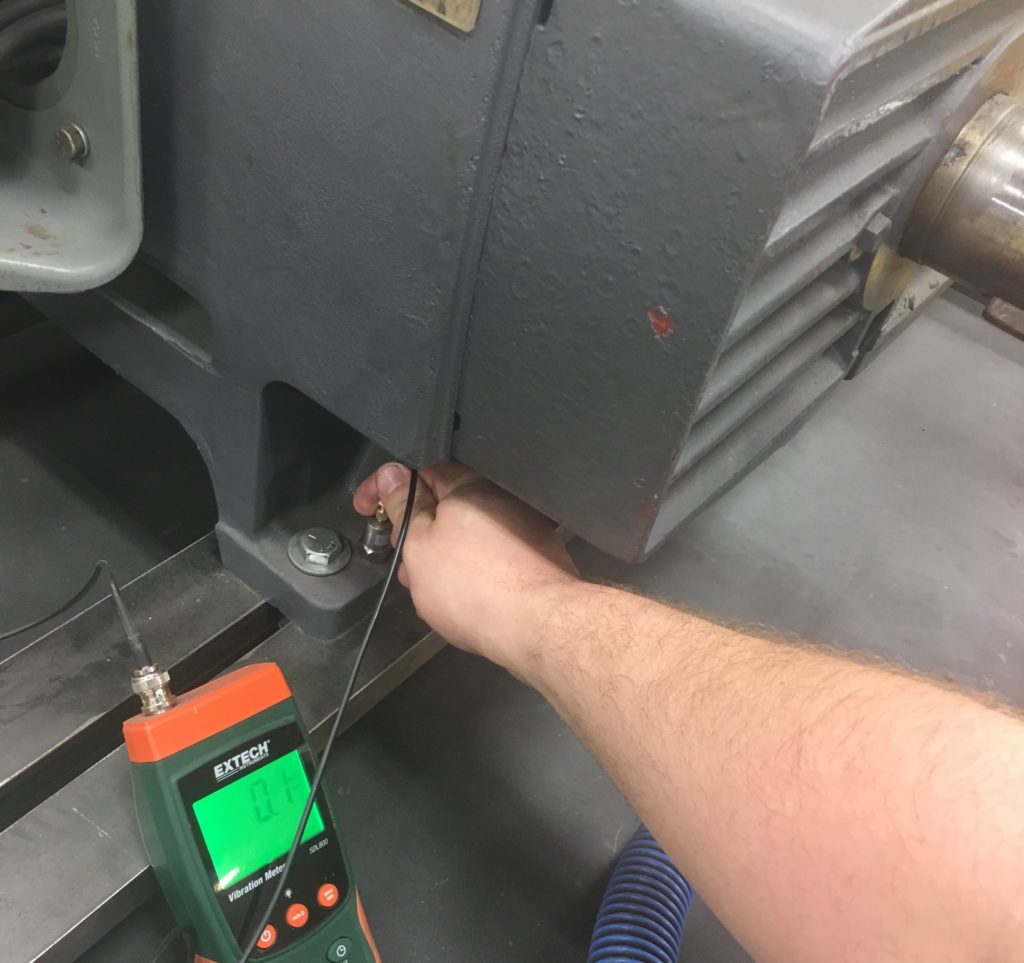What is Soft Foot? This is a condition where one or more of a motor’s mounting feet are not even with the other, creating a condition that can cause undue stress on the machine. This can be from improper mounting, wear from rust or corrosion, missing hardware or even breakage of the foot itself. Identifying whether or not a motor has a “Soft- Foot” failure is important because what can exacerbate the problem is improperly addressing it on the maintenance side. For lack of a better description imagine a table that you stick a piece of wood under one leg to prevent wobble. What tends to happen is that a member of maintenance personnel will see the problem, but address it by simply torqueing down the offending mounting bolt even father. This can create massive problems because now not only is the motor still misaligned you are creating a huge stress riser on that footing – both to its physical structure and mounting hardware that can crack or snap off.
What failures can Soft Foot cause?
- Shaft wear due to misalignment
- Premature bearing failure
- Winding failure due to heat stress from the misaligned motor and excessive vibration.
- Breakage along the mounting base or motor feet.
Soft Foot issues can sometimes be recognized through inspection. What you are looking for is any of the feet not evenly making contact with the mounting surface. Sometimes a foot will appear still straight but slightly lifted and not making contact- this is called Parallel Soft Foot. Another type –called Angular Soft Foot is when the foot makes contact with the mounting surface but bends up at angle. Taking a laser alignment tool measure the plane on which the motor sits and seeing if it is level both on all mountings is a good way to check for this failure.
So how does one recognize whether or not the motor has a Soft Foot issue if it is hard to see visually or you do not have an alignment tool? One of the easier methods is to loosen each mounting bolt, and then tighten each down evenly. Then go one by one and loosen each, keeping the three other bolts tight. Run the motor and check for vibration. If the issue is corrected when one of the feet is loose, you have found the foot that is in need of repair. Sometimes Soft Foot can be corrected by shimming underneath and repeating your alignment steps but if you find that the motor has significant mounting damage or it had been running under a Soft Foot condition for an extended period it is highly recommended you send it in for preventative maintenance.
Recognizing and solving common problems, such as Soft-Foot, is key to preventing downtime failures. But Remember, if you suffer a Motor failure of any type, we are here to help. Be sure to visit us online at www.gesrepair.com or call us at 1-877-249-1701 to learn more about our services. We’re proud to offer Surplus, Complete Repair and Maintenance on all types of Industrial Electronics, Servo Motors, AC and DC Motors, Hydraulics and Pneumatics. Please subscribe to our YouTube page and Like Us on Facebook! Thank you!

Excellent article. This problem is one of the sneakiest issues in industry. One thing I like to do is check the base of the motor and the mounting base for uniform surface integrity . Use a straight edge that you have verified to be true.
Thank you for your comment! Great advice!